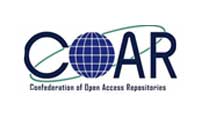VUT DigiResearch
Digiresearch is the VUT electronic open access archive. Its purpose is to collect, distribute and preserve the research performed by the VUT Research community
Slide 1 of 11 

Slide 2 of 11 

Slide 3 of 11 

Slide 4 of 11 

Slide 5 of 11 

Slide 6 of 11 

Slide 7 of 11 

Slide 8 of 11 

Slide 9 of 11 

Slide 10 of 11 

Slide 11 of 11 

Communities in DigiResearch
Select a community to browse its collections.
- Inaugural addresses, Presentations etc.
Recent Submissions
Spectator satisfaction as a mediator between the influence of quality dimensions and intention to attend semi-professional basketball games in South Africa
(Vaal University of Technology, 2024) Mokoena, Katleho; Mabasa, P. N.; Tesnear, S., Dr.
Sport is a broad and dynamic field that includes a variety of team or individual physical games and activities frequently governed by rules and contests. It promotes qualities like determination, discipline and teamwork while providing an environment for entertainment, skill development, physical fitness and interactions with others. Sport also has major cultural, economic and health effects that impact societies all over the world. Participation in sport offers numerous benefits, including improved physical health, enhanced mental well-being and the development of valuable life skills such as teamwork, leadership and resilience. Moreover, sport participation fosters social interaction, community engagement and a sense of belonging, contributing to overall societal cohesion.
Basketball spectator attendance, particularly in South Africa, varies depending on factors such as game quality, physical environment, interaction quality and outcome quality, among others. Whilst basketball has been growing in popularity in South Africa, particularly in urban areas, it still trails behind more established sports like rugby, cricket and soccer in terms of spectator attendance. Major events such as international tournaments or high-profile domestic games can attract significant spectators, especially in cities with a strong basketball culture like Johannesburg and Cape Town. However, compared to other regions where basketball enjoys more widespread support, spectator attendance in South Africa may be relatively lower. Efforts to promote the sport at the grassroots level, improve infrastructure and increase awareness could contribute to boosting basketball spectator attendance in the country over time.
This study explores the role of the spectator as a mediator between satisfaction and intention to attend semi-professional basketball games in South Africa. Drawing on the service quality model (SERVQUAL) and self-determination theory (SDT), this study investigates their intention to attend future games. The participants that matched the present sample requirements were found using a non-probability snowball sampling approach. A total number of 302 questionnaires were collected and analysed. Through a quantitative survey of semiprofessional basketball spectators in South Africa, data were collected to analyse the relationships between satisfaction, intention to attend and the mediating role of the spectator experience. To ascertain the degree of event quality dimensions, spectator satisfaction and intention to attend, as well as to identify the underlying variables of the constructs, means and factor analysis were employed. Findings suggest that spectator satisfaction significantly influences intention to attend, with the spectator experience serving as a mediator in this relationship. Understanding these dynamics can inform strategies to enhance spectator satisfaction and increase attendance at semi-professional basketball games in South Africa. Furthermore, drawing from these conclusions, the limitations of the study, opportunities for future research and contributions are examined.
An evaluation of Internal Communication at a selected University of Technology (UoT) in Gauteng Province
(Vaal University of Technology, 2024-06-13) Moimane, Nontobeko Zakhona; Mwadiwa, K. F., Dr.; Maleho, L. M., Prof.
This study provides comprehensive insights into internal communication strategies and their evaluation, illuminating the intricacies of employer-employee relationships in the communication context. Recognising internal communication's pivotal role in organisational success, it underscores the necessity of understanding and refining communication strategies. Effective internal communication, marked by enhanced employee competence, favourable attitudes, increased productivity, retention, and satisfaction, underscores the imperative to optimise communication methodologies.
The research methodology employed a quantitative approach, leveraging SPSS for data analysis, particularly focusing on descriptive statistics to determine demographic patterns and organisational profiles among respondents. This methodological choice, grounded in objectivity and a positivistic perspective, aimed to ensure precision and reliability in analysing data obtained from a specific University of Technology (UoT) in South Africa. Quantitative research, noted for its breadth, statistical descriptions, and generalisability, facilitated the exploration of relational questions concerning dependent and independent variables within internal communication dynamics.
The study highlights the significance of evaluating internal communication strategies to foster stronger communication between management and employees. This recommendation, aligned with understanding employees' perceptions of internal media, emphasises the need for a nuanced approach to message content and delivery formats. It advocates for initiatives such as ensuring email access for all employees, installing electronic billboards for easy access to notices, and implementing intercoms for urgent communications, managed by the institution's Advancement Division.
Drawing on communication theories, the study further highlights the purposeful nature of communication and the varying efficacy of different communication strategies in conveying information effectively. While rich communication strategies like face-to-face meetings foster greater satisfaction with job-related information, moderate strategies such as email and internet platforms benefit technologically adept employees.
Evaluation of operating parameters to improve the efficiency of a proton exchange membrane fuel cell
(Vaal University of Technology, 2022-11-25) Matlatle, Lesetja Jacob; Sutherland, Trudy, Dr.; Seodigeng, Tumi, Prof.
This paper presents the modeling and simulation of a proton exchange membrane fuel cell (PEMFC) for the improvement of its efficiency. Short life span and low efficiency is a general issue of fuel cell systems. Therefore, designing and simulating a system capable of measuring crucial parameters of a PEMFC is essential for achieving an improved system performance. A polarization curve is utilized to evaluate the performance of a fuel cell, so this paper is focused on a variety of critical parameters and their output is traced specifically on a polarization curve. The system design was simulated in Matlab-Simulink and the data agreed well with the published data. The output of this study has the potential to contribute in renewable energy sectors, and industry.
Sustainable supply chain managment and corporate performance in small and medium-scale construction enterprises
(Vaal University of Technology, 2022-08) Mafundu, Robert Hamudiwamwe; Mokoena, B. A., Prof.; Mafini, C., Prof.
The contributions of the construction industry to South Africa’s economic development are widely acknowledged. Small to medium enterprises (SMEs) have become increasingly important players in the country's construction industry. The construction industry faces numerous challenges that are also well-known, and its SMEs remain severely exposed to these problems. This study investigated the relationship between sustainable supply chain management (SSCM) practices, supply chain sustainability, supply chain responsiveness and corporate performance in construction SMEs in South Africa. The study applied a quantitative approach using a structured survey questionnaire to collect data from 413 purposively selected SME owners, managers and professional employees drawn from construction SMEs in four provinces: Gauteng, Limpopo, Mpumalanga and North-West. The collected data was analysed using the Statistical Packages for Social Sciences (SPSS version 27.0 and the SMART Partial Least Squares (PLS) 3.0 statistical software. The actual data analysis techniques utilised comprised descriptive and inferential statistics and hypotheses were tested using structural equation modelling.
The study results revealed that two SSCM practices, supply chain learning and supply chain responsibility, contributed positively to supply chain sustainability, which, in turn, predicted supply chain responsiveness. Moreover, supply chain responsiveness contributed positively to five corporate performance indicators, namely operational performance, operational agility, market performance, return on investment and profitability.
The study underscores the importance of supply chain learning and responsibility as predictive drivers of sustainability and how the latter is an antecedent of the responsiveness of construction SME supply chains. These constructs were proven to be critical for the improvement of corporate performance. The study introduces a model demonstrating the interaction of these factors in the construction industry. This model may be adopted to improve supply chain sustainability, responsiveness and corporate performance in construction SMEs.
Adsorption of Chromium (Cr(VI)), Manganese (Mn(II)), Methylene Blue, Paracetamol), and Ibuprofen from Water by a blend material of (avocado seeds and paper waste)
(Vaal University of Technology, 2025) Mabalane, Koketso; Thabede, P. M., Dr.; Shooto, N. D., Prof.
Environmental pollution is currently a worrying problem, as more and more harmful pollutants are being released into water bodies and the environment. Many of these water pollutants are dangerous and pose a threat to all living creatures and the ecosystem. To mitigate this problem, we have developed adsorbents from paper waste and avocado seeds. We also produced carbon blends from avocado seeds and paper waste and activated them with hydrogen peroxide (H2O2), nitric acid (HNO3) and potassium permanganate (KMnO4). We tested their effectiveness in removing Cr(VI), Mn(II), MB (methylene blue dye), IBU (Ibuprofen) and PRC (Paracetamol) from water.
The adsorbents from paper waste were characterized by Scanning electron microscope (SEM), Energy Dispersive X-ray (EDX), Fourier-transform infrared spectroscopy (FTIR) and Branauer-Emmett-Teller (BET) to determine the properties of the materials. The surface morphology of the materials consisted of amorphous particles. The EDX shows that all activated samples have a higher content of (O) compared to CPW (carbon paper waste). The adsorption studies showed a stronger interaction between the contaminant and the adsorbent at a higher initial concentration (100 mg/L) than at the lower initial concentrations. The contact time data show that uptake increases as the interaction time between the contaminant and the adsorbent increases. The tests for the pH of the solution show that the adsorption of Cr(VI) decreases when the pH is gradually increased, on the other hand MB (methylene blue dye) showed that the adsorption increases when the pH of the solution is increased. The results are in better agreement with the Freundlich isotherm and the PSO models. The temperature studies show that the enthalpy was positive, indicating that the uptake process is endothermic. The Gibbs free energy values were all negative, indicating that the adsorption between the adsorbents and the contaminants was favored.
According to the results, the BET surface area for CAS (carbon from activated seed), ACAP (activated carbon from avocado seeds by nitric acid), ACAN (activated carbon from avocado seeds by hydrogen peroxide) and ACAH (activated carbon from avocado seeds by potassium permanganate) were 17.30, 29.50, 32.80 and 33.90 m2/g, respectively. The presence of functional groups such as -OH, -COOH, -CO and -COC on the surface of the adsorbents was detected by FTIR spectra. The avocado seed based adsorbents SEM images showed a morphological change in ACAN that could be related to HNO3 oxidation during modification, which resulted in smaller spheres. For Cr(VI) and Mn(II) ions, all adsorbents were found to have greater uptake capacity at pH 2, with maximum adsorption capacities of 49.8 and 50.1 mg/g, respectively. The isothermal data showed that the uptake of Cr(VI) and Mn(II) ions on all adsorbents was a good fit to Freundlich. For both Cr(VI) and Mn(II) ions, the adsorption capacity developed according to ACAH>ACAP>ACAN>CAS.
Blend materials were confirmed using SEM, BET and FTIR, the data showed that the morphology of the adsorbents was porous, had a large surface area and several functional groups were bound to the surface. The concentration effect experiments showed that the uptake of IBU and PRC increased with increasing initial concentration and that these data were consistent with the Freundlich model. The contact time effect showed that the uptake of PRC was rapid in the initial phase for all adsorbents. However, the rate gradually slowed down and equilibrium was reached after 40 min for BCMN (nitric acid-activated mixed carbon material), 60 min for BCMH (hydrogen peroxide-activated mixed carbon material) and BCMP (potassium permanganate-activated mixed carbon material) and 120 min for BCM. IBU, on the other hand, showed that equilibrium was reached after 30 min for BCMN, BCMH and BCMP and after 120 min for BCM. These data complemented the PSO model. The model is based on chemisorption, where electrons are transferred and shared, hydrogen bonding and the π-π interaction. The △H° value confirms that the sorption of IBU and PRC was endothermic. The △S° was positive, indicating greater freedom at the solution interface during uptake.





